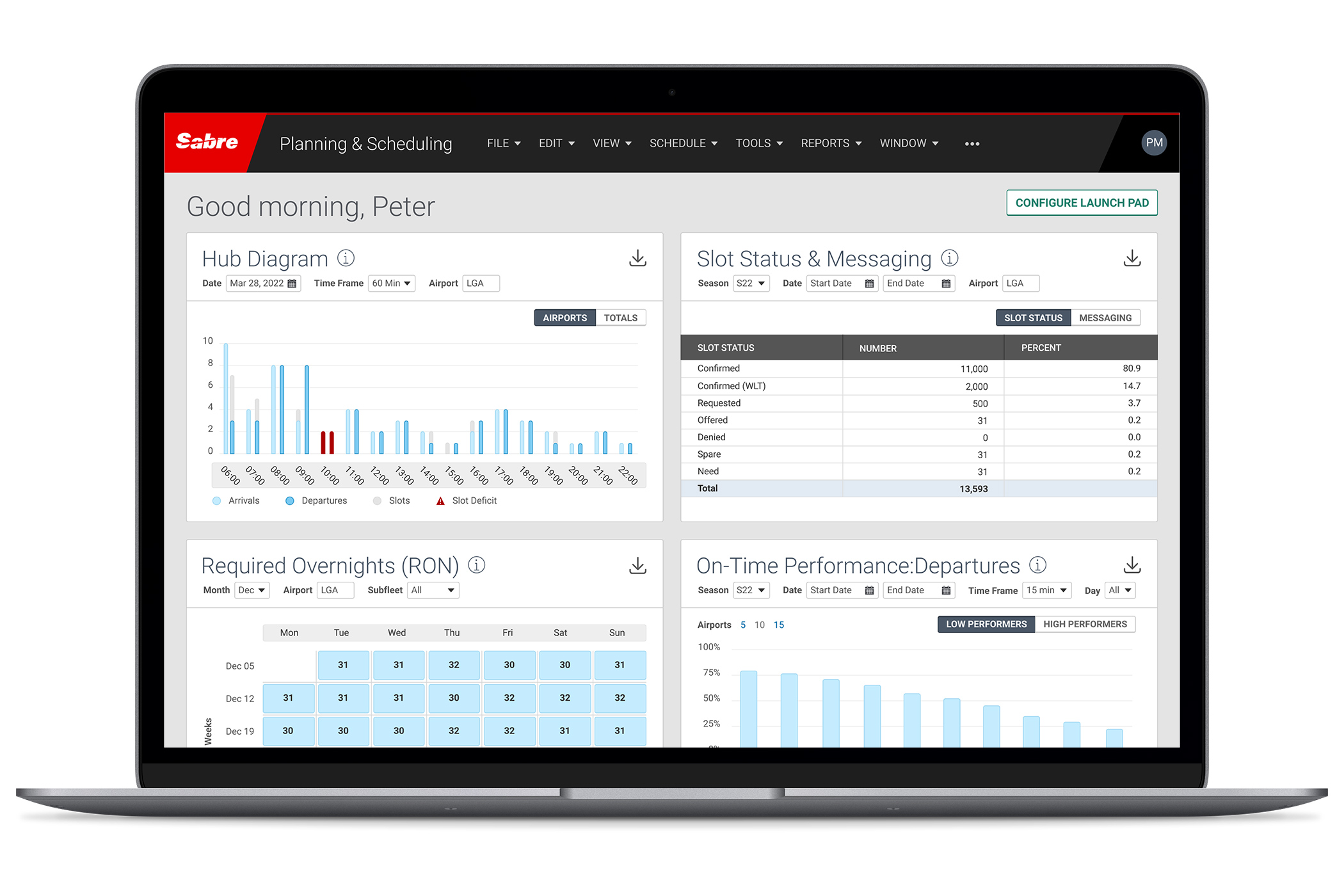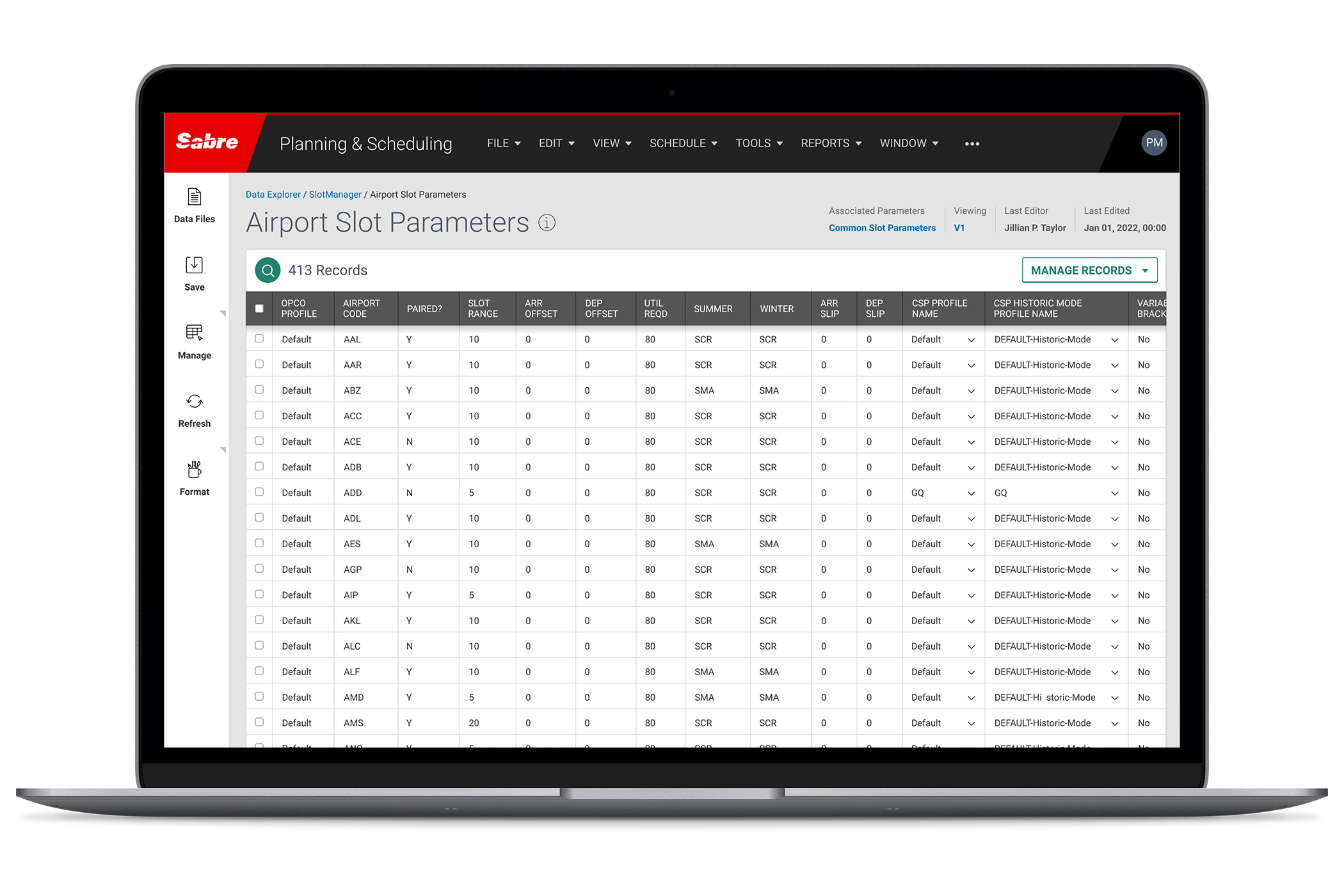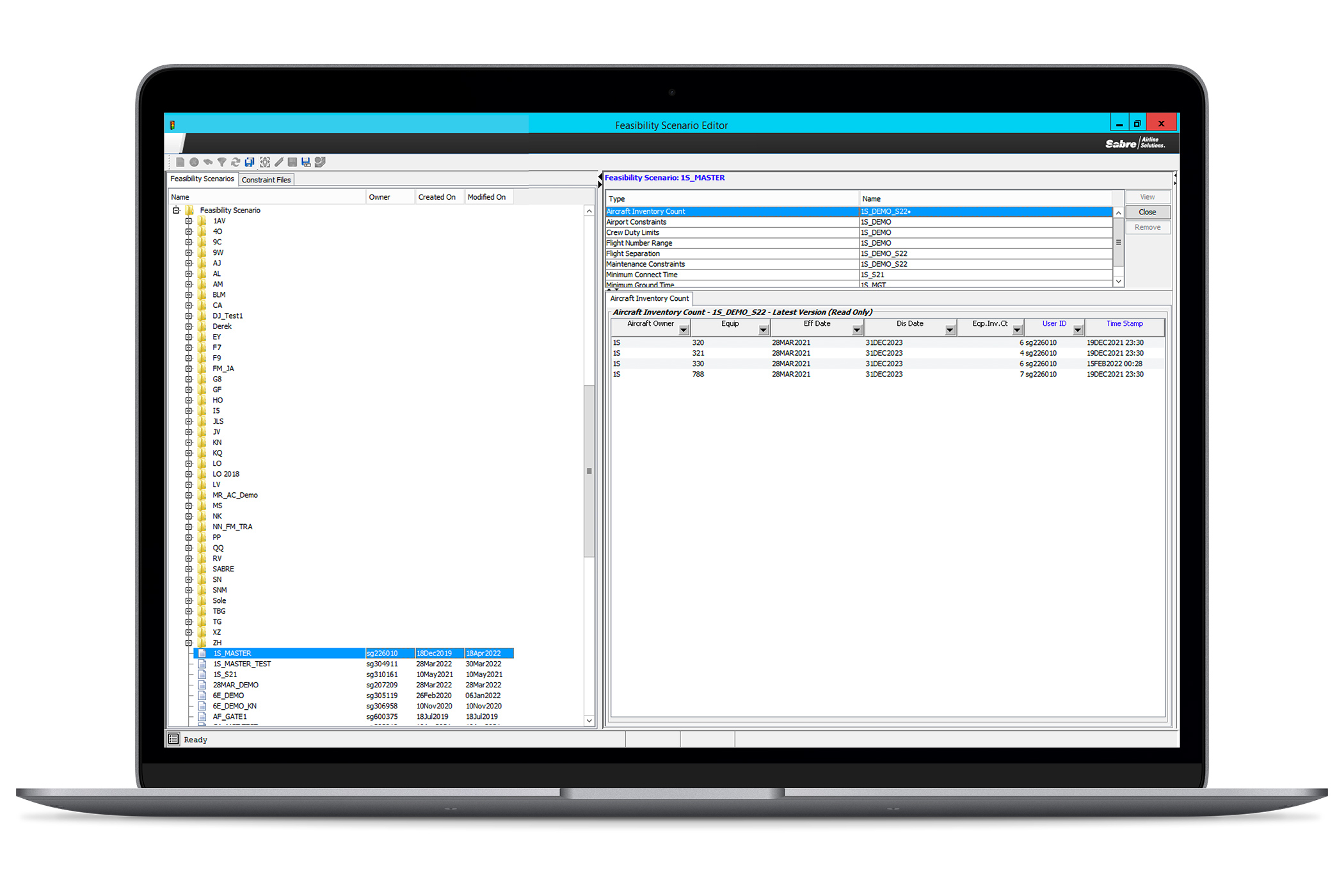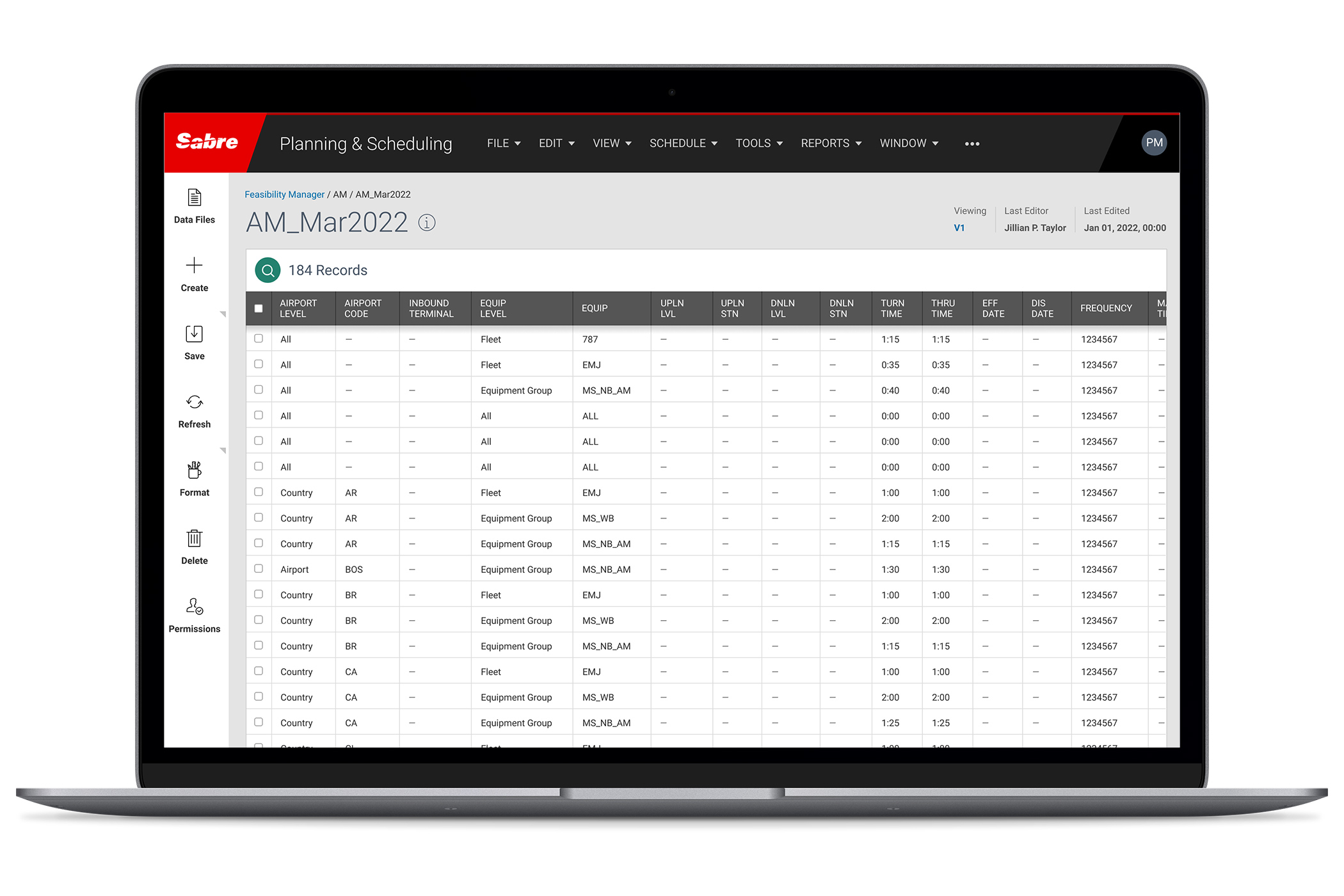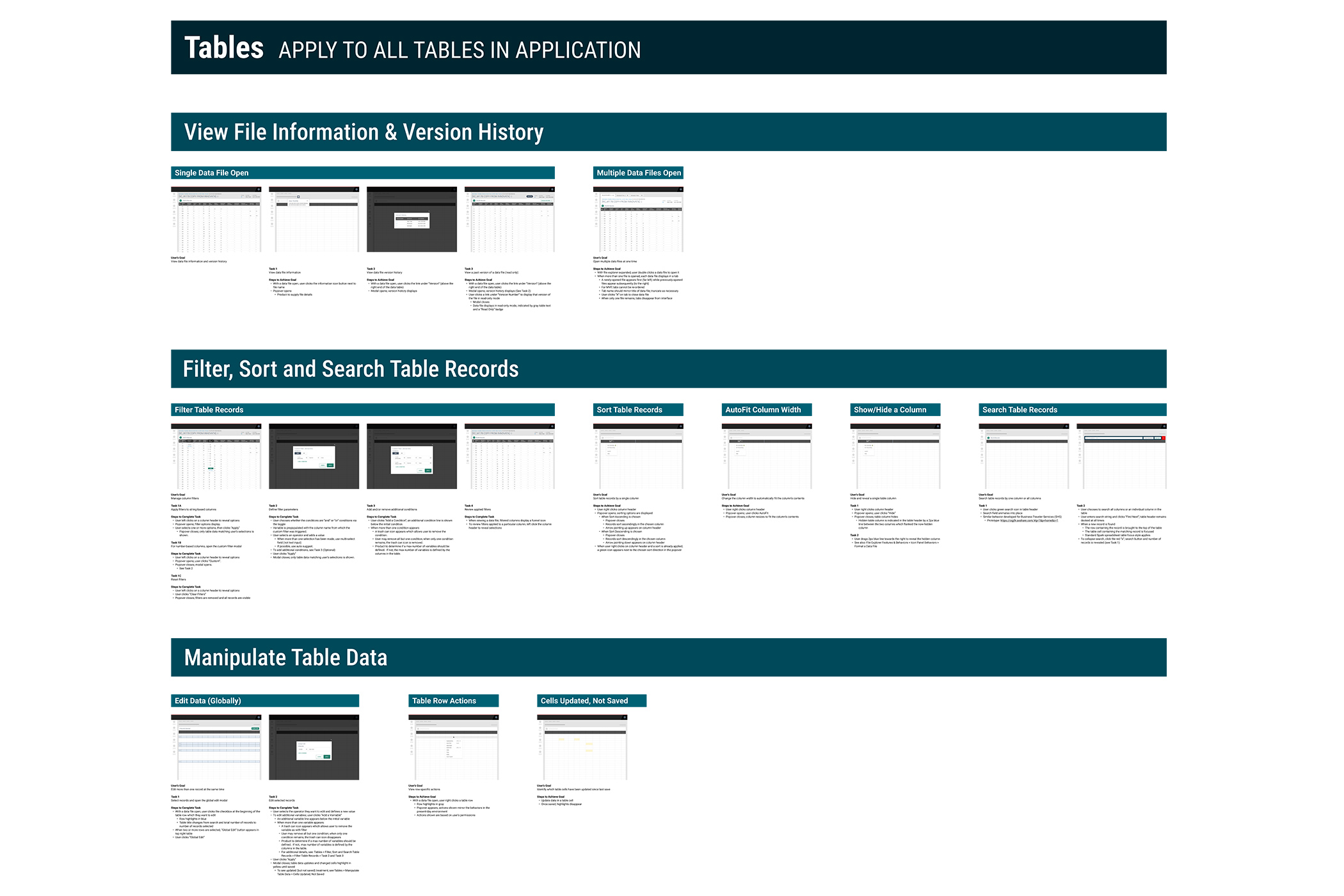Overview
Network Planning & Scheduling is a decision support system designed to manage flight schedule in real time.
Background: 2022 brought the arduous task of migrating this 30-year-old Ruby on Rails application to the web, making it responsive, user friendly and ADA compliant.
Empathize
Armed with notes from our product partners and access to the live tool, the design team explored user flows. In addition to the dated aesthetic, we faced two overarching problems:
- The product team had no scope of work.
- The tool was not intuitive, and no instructions were included.
With a limited 90-day engagement and a heavy workload, we had to pick and choose where to invest our time. Thankfully, we had prior usability studies to inform our path forward.
Define
This application cared for several personas. For this engagement, we focused on one persona and five user flows.
Without a project definition or needs statement, the user experience team watched product demos, attempted to understand the current application, then extracted and documented requirements that were approved by the product team.
Additionally, we inherited design assets from a previous UX engagement. Unfortunately, those assets were not accessibility compliant and did not align with our design language. To avoid future audits, we updated the assets then looked across all flows and devised holistic solutions that could apply to multiple sections of the application, including those outside of our immediate scope of work.
In the short term, some of the work was a simple lift-and-shift. Luckily, the product team was eager to make visual and usability improvements. When immediate changes could not be implemented, features were added to a backlog as future enhancements.
Because our engagement was limited to 90 days, we had to honor a strict hand-off date. The abbreviated timeline prevented us from partnering closely with the development team, so we created leave-behind pieces that clearly articulated how non-linear pieces fit together.
Ideate
Drawing from previous studies and our own experience, we ideated, created sketches, did brain dumps and reframed insights into how might we statements. One statement became our guiding light.
How Might We
Infuse consistent, predictable patterns into the disconnected arms of this (massive) application so that each feels familiar to our user?
Prototype
We focused our efforts on a dashboard of widgets that provided insights to users upon login. Repeatedly, we debated how much information was too much vs. not enough. To assure we focused on the proper level detail, we tested each widget individually, then evaluated the process of customizing the dashboard. Once complete, we designed more complex interactions, then built prototypes of user flows.
Outcomes
Our studies found:
- Users successfully identified key aspects of the dashboard widgets and knew how they would use each one to determine next steps.
- Users were able to find what they needed considering the leap from desktop legacy to web-based interface.
- While users were able to complete tasks, an iteration was needed to adjust some available on-page actions.
- Participants rated ease of use between 4 and 5 out of 5.
I love the enthusiasm you guys have shown for making a prototype that allows us to truly test whether something is working as expected, especially as we move from legacy to web. It’s clear you’ve thought about each interaction and gaps. As a team, you make research easier, and you make your product teams proud.
M. Scott, Researcher
The Team
I led the redesign of the application from January 2022 – March 2022.
During this time, I collaborated with two UX designers, one researcher and three product owners.
My personal responsibilities included:
- Leading stakeholder meetings to define and document:
- what the product is
- who will use it
- why they will use it
- technical constraints
- project timelines
- Dividing work among teammates
- Creating design deliverables
- Reviewing team deliverables for proper information hierarchy, visual consistency, and adherence to the enterprise design language
- Preparing prototypes
- Presenting solutions to the product team
- Managing timelines
